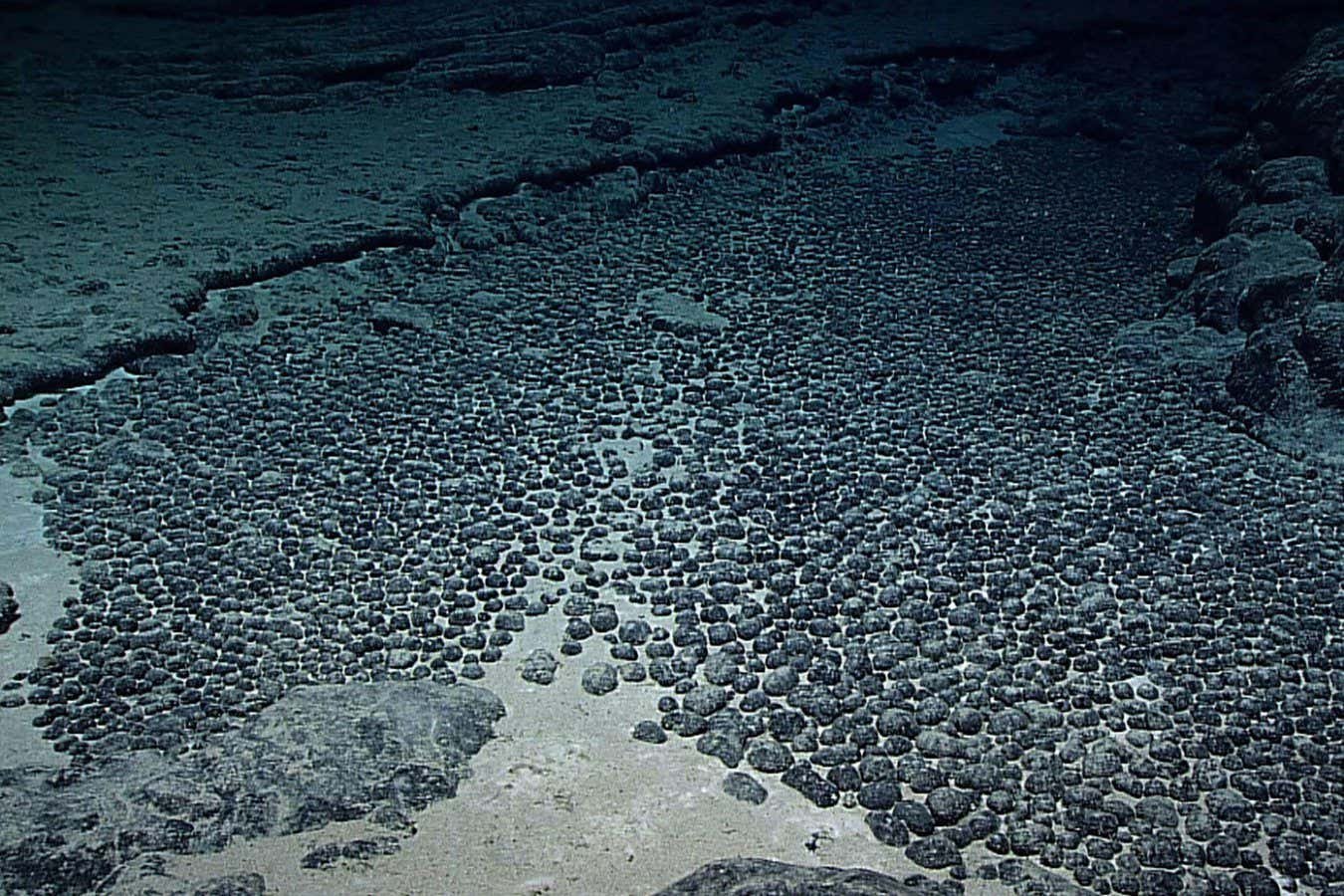Manganese nodules on the seabed can be a source of oxygen
Science History Images/Alamy
Marine scientists who made headlines last year with their discovery that deep-sea nodules could produce “dark oxygen” are embarking on a three-year research project to explain their findings.
Amid swirling controversy over their research, project leader Andrew Sweetman of the Scottish Association for Marine Science says he hopes the new scheme will “show once and for all” that metallic clumps of rock are sources of deep-sea silt and begin to explain how the process works. “We know it’s going on, and what we need to do now is show it again, and then really start to get the mechanism going,” he says.
Sweetman had spent more than a decade studying life on the ocean floor before his shock discovery made headlines last July and baffled the scientific community. Previously, it was thought that oxygen production was dependent on the presence of plants, algae or cyanobacteria to carry out photosynthesis, powered by sunlight.
But Sweetman’s team found rising oxygen levels in nodule-rich areas of the ocean floor, thousands of meters below sea level, where no light can penetrate and no plants grow. The researchers proposed that the nodules could act as “geobatteries” that generate an electric current that splits water molecules into hydrogen and “dark” oxygen, produced naturally without photosynthesis.
Sweetman found himself at the center of a media storm. Life changed overnight, he says – he even gets stopped on the street by people who want a photograph with him. “It’s been very surreal,” he says.
But the discovery also brought challenges. The research has drawn criticism from some scientists and deep-sea mining companies, which plan to mine the nodules for precious materials needed for the green energy transition.
The Metals Company (TMC), which funded some of the research that led to Sweetman’s 2024 paper, has been among the harshest critics of his findings. Its scientists have published a paper claiming the discovery is “completely unsupported” by evidence and raising concerns about the study’s methodology.
“After decades of research using the same methods, no credible scientist has ever reported evidence of ‘dark oxygen,'” Gerard Barron, CEO and chairman of The Metals Company, said in a statement. “Extraordinary claims require extraordinary evidence. We are still waiting.”
Other researchers have also raised concerns about Sweetman’s use of the data, saying faulty equipment or misuse of the landers could have produced unusual readings. To date, none of the responses have completed the peer review process.
Concerns have also been raised with the journal that published Sweetman’s study, Nature Geosciences. “We have taken a closer look [these concerns] strictly follow an established process. But a decision on what actions may need to be taken has not been made at this time, says a spokesman for the magazine. New Scientist.
Sweetman insists that his study is accurate and that he will respond to the TMC’s criticisms in a formal rebuttal of their paper. But he says his experience at the center of the controversy has been “extremely tiring” and upsetting. “There has been a lot of discussion. Many mining companies have said many different things, a lot of it is not so nice, which has been a challenge to live through,” he says. the web has not been nice to be exposed to and it has been continuous.”
Sweetman’s new research project, funded through a £2 million grant from Japanese charity The Nippon Foundation, aims to put some of the controversy to rest. Sweetman’s team will use brand new, purpose-built landers capable of descending to 12,000 meters below sea level, double the depth reached by the previous study, to hunt specifically for dark oxygen production in the Pacific Ocean.
The first of three research expeditions will set sail in January 2026 from San Diego, California, with the aim of confirming nodule-driven oxygen production in the deep ocean with fresh data. Once again, the countries will close samples of water and sediment from the seabed to measure changes in oxygen concentrations. The researchers will also test for the presence of hydrogen, which would also be produced if seawater electrolysis occurs. And they will inject isotopically labeled water into samples to track any chemical changes in the elements.
Sweetman is optimistic about the prospects for finding dark oxygen production. “I know that it is happens. We have now found that in six places. I know we have to find it, he says.
Two more expeditions will seek to investigate what microbial or electrochemical mechanisms may be at play and begin to explore the potential contribution of dark oxygen production in deep-sea ecosystems. It is the first research of its kind to directly explore these processes – Sweetman’s initial discovery was, by his own admission, “serendipitous”. “I didn’t set out to show this; we just set out to measure the respiration of the seabed,” he says of his initial work.
NASA is also interested in studying the knots, Sweetman says, to investigate whether similar processes could support life on other moons and planets.
Deep sea mining companies will follow the project closely. They hope to start operations later this year, but are still waiting for the International Seabed Authority to finalize its rules on deep-sea mining. More evidence of deep-sea oxygen production would be a serious blow to their hopes of establishing a mining industry on the seabed.
Sweetman says companies should hold off on seafloor mining until scientists know more about the potential role of dark oxygen production in ocean ecosystems. “All we’re asking for is a little more time to go out and try to figure out what’s going on,” he says.
Article amended on 24 January 2025
The article was amended to properly attribute some of the criticism of Sweetman’s research.
Subjects:
